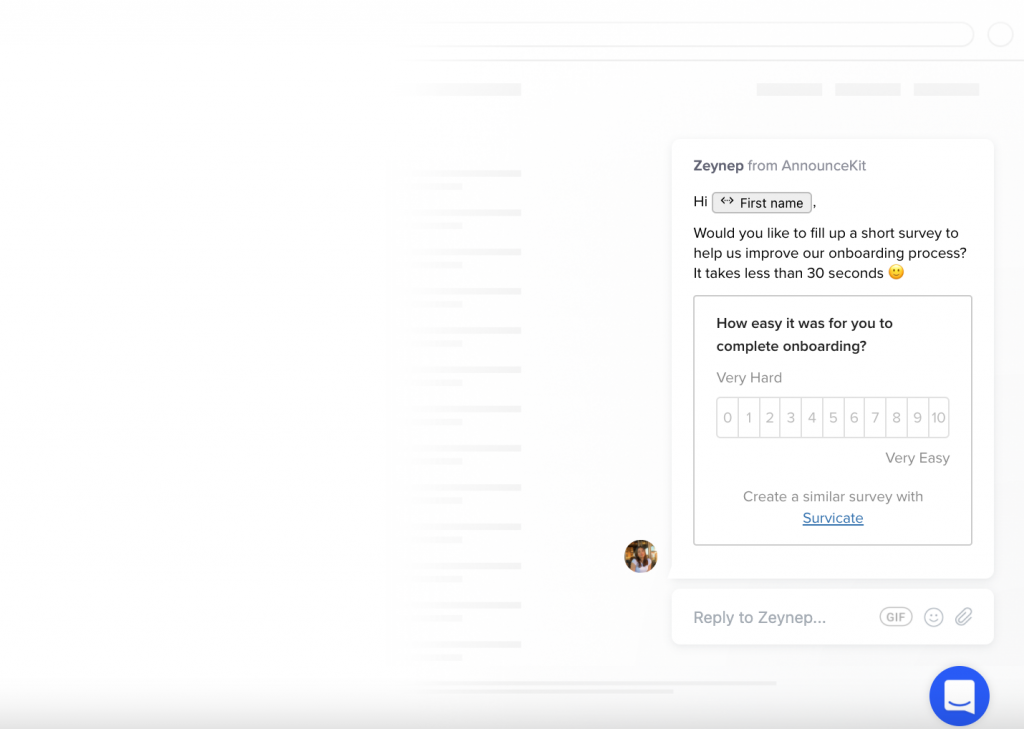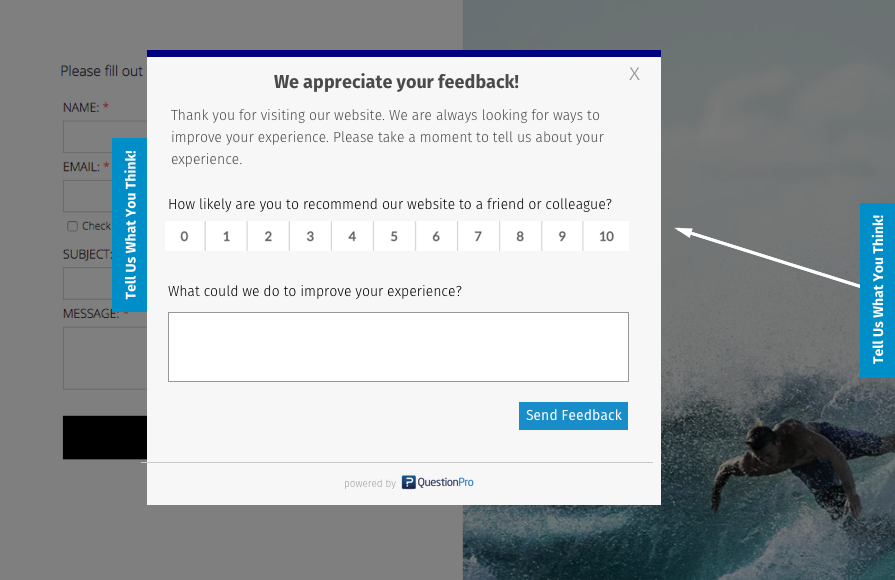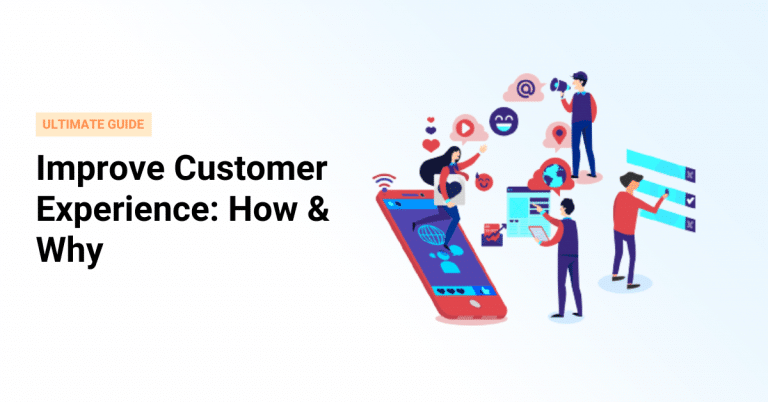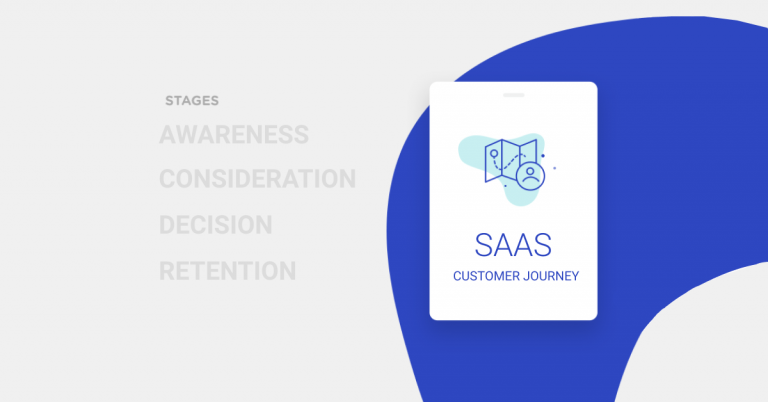Have you ever received an email about evaluating your experience after using a service or tool for your business?
That was a rhetorical question; of course, you have.
SaaS companies mostly ask for a rating of your satisfaction and experience at certain times. We call the examination of these ratings NPS, Net Promoter Score.
Why do they ask for it? Because the destiny of your service highly depends on the customer satisfaction.
As long as you monitor NPS best practices properly, it will become your most powerful marketing and product improvement weapon.
What is the best way to pull the trigger? Let’s learn more about this weapon and how to use it.

Quick Setup, Easy to Use, and Many Integrations
Manage your product announcements from a single place and easily distribute them
across multiple channels.
What is NPS?
Net Promoter Score, aka NPS, is a way of measuring customer satisfaction, and it is also used for monitoring your customers’ loyalty and eagerness to recommend your tool.
NPS is a short and simple survey that asks your users to rate you on a scale of 0 to 10. It shows how your users are experiencing your service on this scale, and it enables you to evaluate how many users are pleased or how many of them are not with your product mathematically.
Why monitor NPS for B2B SaaS?
NPS is one of the best ways to monitor your customer satisfaction. Using NPS best practices and monitoring the information that comes from these surveys enables you to better understand how to improve your product in the long term.
Shape desired behaviour pattern
When you evaluate what makes your users happy, you can use this insight to reach desired behavior patterns and make other users’ experiences better.
Spot customers at the edge of churn
It enables you to detect unsatisfied customers who are at the edge of canceling their plans. With an NPS survey, you can get the necessary feedback from them to make some changes to improve their experience and keep them with you.
How NPS works for B2B SaaS?
1. Create your survey
The first step of your survey is a 0–10 numerical rating. Ask the question that enables them to rate you. This provides numerical data that can be tracked in total.
The second step of your NPS survey is where you ask for a sentence to express their ideas. It allows the customer to provide a supporting statement for their rating.
2. Group the responses
Users are grouped into three according to their numerical rating between 0-10.
Promoter
Promoters are users who give a score of 9 or 10 to your survey. As it can be seen, promoters are a user group that is satisfied with your product and willing to recommend it.
Passive
Passives are users who give a score of 7 or 8 to your survey. Passive mainly refers to users who like your product but haven’t experienced an “aha” moment. They mostly do not talk about your product in a bad way but are not willing to personally recommend it.
Detractor
Detractors are users who give a score of 6 or below. Detractors are obviously not satisfied with your product, and they are more likely to dissuade people from using your product.
3. Calculate your NPS
NPS provides a score of percentage for grading your overall customer experience.
Let’s say you have 450 surveys that have been filled out in total and 80% of your customers are promoters, and 12% of them are detractors. Your NPS is the percentage of promoters minus the percentage of detractors; 80-12=68.
4. Monitor your NPS in the progress of time
Your NPS allows you to track how changes you make to your product affect the customer experience in time.
5 NPS Best Practices
1. Timing
NPS best practices start with timing. When reaching out to your users for valuable feedback, you need to spot the right time to ask for a rating. For example, if you ask for a rating of your customer onboarding, you need to give them at least two days to send your survey.
For an overall experience survey, people must spend 3 to 6 months with your product, depending on the scope of service, so you should give them time to explore your product.
You also shouldn’t be too insistent; this results in overwhelming your customers even they are satisfied. People naturally more tend to delete emails right away, do not fill out surveys. So, you need to find the right time to take their attention.
Right after they completed the onboarding.

When they have more than 300 web sessions.

2. Segment your users and give a specific reason
One of the other NPS best practices is segmentation. You need to segment your users to send NPS surveys. Why?
Different user experiences, different processes. Monitor every user base at every different stage of their customer journey.
I remember that I only one time filled out an NPS survey, and it was right after a good shopping experience at Sephora.
You need to give a specific reason to your customers to fill out your NPS survey. They knew that I just had a shopping, I met the user properties of that specific segment and bingo! They got me.
You need to create segments for different user actions and provide them a reason to open that survey mail.
For example, if you have an Analytics dashboard to provide them with several metrics, you can send them a satisfaction survey if you see that they are spending time there.
You should also segment their responses to get the right results and numbers.
3. Make it personalized
You need to optimize the customer journey individually to provide a personal experience. You should be equipped with the past activities of users or details about their company. It will immediately provide trust and increase the possibility of getting a rating.
You can even get more personalized and send small gifts like socks, stickers, and caps to your promoters and make them share their personalized experience on social media.
4. Follow up responses
You should follow up with both promoters and detractors and reply to their good or bad scores. By showing care and fixing the pain point for them, you even turn a detractor into a promoter.
Segmentation also allows sending more targeted follow-up after the survey. This will give them the chance to explain why they gave their particular survey responses, delivering a more personalized customer journey.
5. Use different channels
Most traditionally, you can send NPS surveys via email. However, we know that people tend to delete those emails when they are not very interested.
Within the scope of NPS best practices, it is better to show surveys in different places where are much more contextual. You can provide popping-up windows or pages before gateways to send surveys.
Email NPS as traditional.

Pop-up windows with an option to reject.

With a feedback tool widget that is embedded in a reachable place.

Ready to NPS
NPS is an easy but important metric to monitor the satisfaction level of your B2B SaaS users. If you follow the NPS best practices well, there is no way to get a detractor for your business. It can be a great weapon to use in marketing and product improvement at some point.
Cover image credit to https://dribbble.com/Zerodot13






